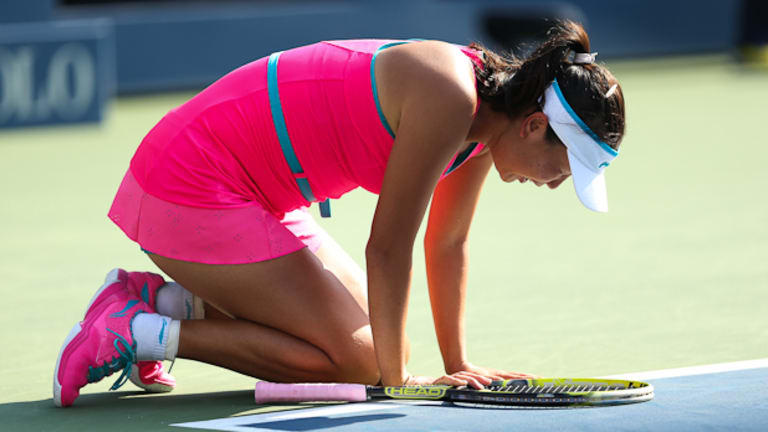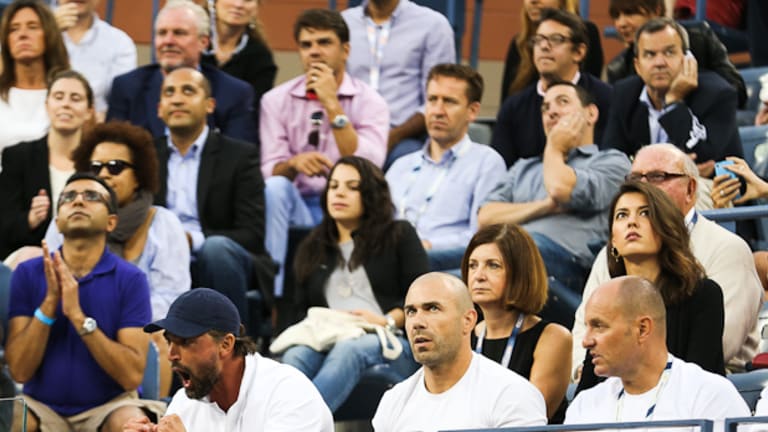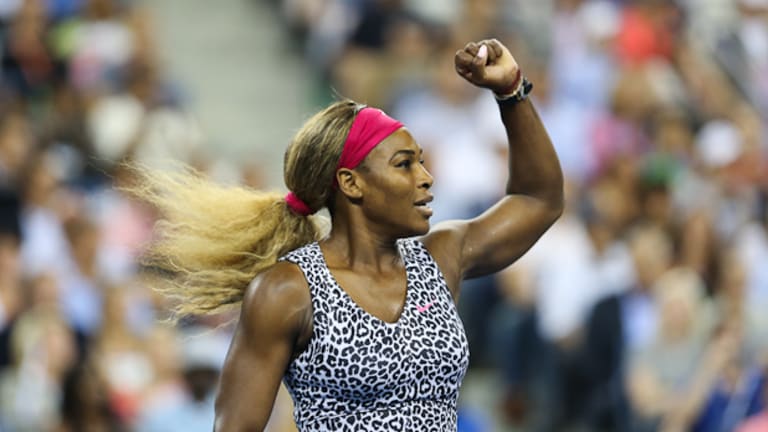NEW YORK—It’s kind of hard to leave the U.S. Open after being pre-occupied with it for 15 days and nights. But before I go, I’m going to try to capture a sense of what transpired this past fortnight-plus by publishing 14 thoughts on the just-completed tournament. These are in no particular order of importance:
1. Be careful what you wish for if you’re one of those fans just dying to see the long-predicted “changing of the guard” in men’s tennis. The mens’ finalists were not culled from the usual “long-shot” suspects like Tomas Berdych, Jo-Wilfried Tsonga, or David Ferrer, nor from the ranks of the young turks. The fact that No. 14 seed Marin Cilic and No. 10 Kei Nishikori fought for the trophy suggests that should the “Big Four” vanish tomorrow, there would be no new guard coming it.
Meaning, I can’t see Nishikori or Cilic, or even Australian Open champ Stan Wawrinka, taking over the post. Rather, we’ll see a wide variety of players taking turns producing surprising results. That has its own appeal, of course, but the “changing of the guard” implies an orderly transition from one distinct group to another, and I don’t see that happening in the men's game—nor, for that matter, in the women's game, when Serena Williams relents.
2. Prodigies need not apply anymore when it comes to candidates for overnight stardom. Catherine (CiCi) Bellis created a sensation when she upset No. 12 seed Dominika Cibulkova in the first round, and she played a pretty good three-set second-round match against Zarina Diyas. But Bellis was the top seed in the junior event as well, and she was beaten in the second round by Russia’s Natalia Vikhlyantseva. It’s possible that Bellis was emotionally drained or adversely affected by all the attention she received because of her main-draw activities. Fair enough. But the facts suggest that even the most promising of youngsters have their hands full in the junior division these days—never mind dreams of making it deep into the main event.
3. Medical time outs are bad medicine, and so are the bathroom-break rules. We saw during the Peng Shuai controversy that there were no real protocols followed at all, thanks mainly to the way the “heat rule” is essentially an “anything goes because it’s scary hot and someone could get hurt out there” rule. But isn’t it absurd that a player, who’s already woozy and incapable of sound judgment, can unilaterally elect to go back on court after an evaluation and three-minute treatment?
Injury timeouts are being terribly abused, even by juniors. Twice this year, at Roland Garros and the U.S. Open, a junior player freely and comfortably admitted to taking an injury timeout even though he didn’t really need one. It’s part of the game now, just like grunting and shrieking. In each case, the kid took it because his opponent had already received a bogus time-out for a massage.
I don’t have enough space to go into the details here, but I think when a player takes an injury timeout he ought to be obliged to consult with a doctor, and the decision about whether he or she continues ought to be made by the physician. And please, no massages. Just evaluation and taping, if necessary.
As for bathroom breaks, they’re so common now that they ought to be automatic at the end of each set. Players could choose to take it or remain on court.



